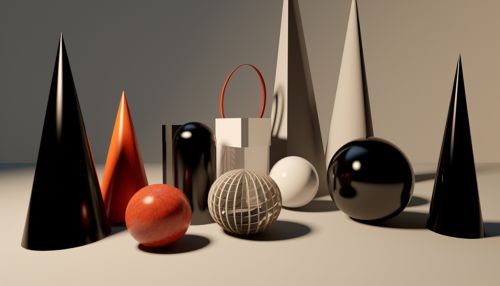Recognition-by-Components Theory
Introduction
Recognition-by-Components (RBC) theory is a model for object recognition proposed by psychologist Irving Biederman in 1987. The theory posits that we recognize objects by breaking them down into their basic three-dimensional geometric shapes, or "geons". Biederman suggested that there are about 36 different geons that can be combined in various ways to form countless objects in our environment.


Geons
According to the RBC theory, geons are the "alphabet" of object recognition. They are simple, three-dimensional shapes such as cylinders, cubes, cones, and spheres. Biederman suggested that there are about 36 different geons, and that we can recognize objects by identifying the geons that make up the object and the relationships between them.
The theory also posits that geons are viewpoint invariant, meaning that they can be recognized from any angle. This is a key feature of the theory, as it allows for object recognition even when the object is partially obscured or viewed from an unusual angle.
Object Recognition
In the RBC theory, object recognition is a bottom-up process, meaning that it begins with the sensory input and works its way up to higher-level cognitive processes. The process starts with the detection of edges in the visual scene, which are then grouped into contours. These contours are used to identify the geons that make up the object.
Once the geons have been identified, they are compared to a mental "dictionary" of objects, each of which is represented by a specific combination of geons. If a match is found, the object is recognized. If no match is found, the process continues with the identification of additional geons and the relationships between them.
Evidence for RBC Theory
There is considerable empirical evidence supporting the RBC theory. For example, studies have shown that people are able to recognize objects even when they are partially obscured, which is consistent with the viewpoint invariance of geons.
Other studies have shown that people are faster at recognizing objects that are made up of fewer geons, which suggests that the process of identifying geons and their relationships is a key part of object recognition.
However, the RBC theory is not without its critics. Some researchers have argued that the theory is too simplistic, and that object recognition involves more than just the identification of geons. For example, it has been suggested that color and texture also play a role in object recognition, which the RBC theory does not account for.
Criticisms and Alternatives
While the RBC theory has been influential in the field of object recognition, it has also faced criticism. One of the main criticisms is that the theory is too simplistic and does not account for all aspects of object recognition.
For example, the RBC theory does not explain how we recognize objects that are not made up of geons, such as clouds or water. Furthermore, the theory does not account for the role of color and texture in object recognition.
In response to these criticisms, alternative theories have been proposed. One such theory is the Feature Integration Theory, which suggests that object recognition involves the integration of various features, such as color, shape, and texture.
Conclusion
Despite its limitations, the Recognition-by-Components theory has made a significant contribution to our understanding of object recognition. It has provided a framework for understanding how we recognize objects, and has inspired a great deal of research in this area. While the theory may not account for all aspects of object recognition, it has nonetheless provided a valuable starting point for further research.
